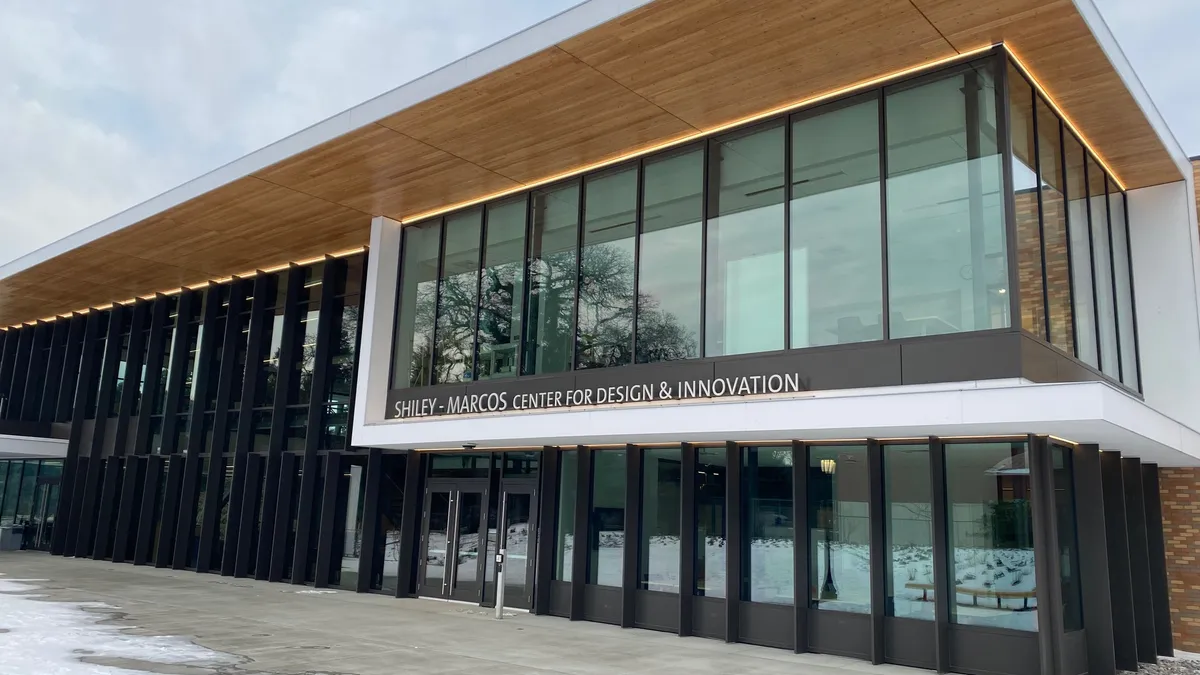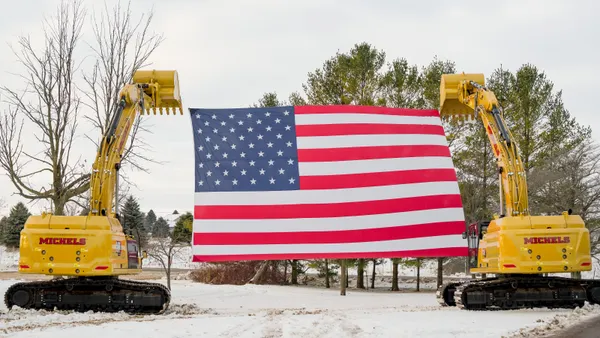In January, Skanska achieved substantial completion of the University of Portland’s Shiley-Marcos Center for Design & Innovation in Oregon.
The 43,800-square-foot building, which broke ground in August 2022, features 36 cross-laminated timber panels, 624,000 pounds of steel and 1,900 cubic yards of concrete. But perhaps what is most notable is that the project reused the main structural system of an existing physical plant to make the new academic building.
The adaptive reuse strategy reduced the use of concrete and rebar and achieved a 42% reduction in embodied carbon emissions compared to an entirely new building, according to Skanska.
It’s gotten easier in the last decade to pursue sustainability in construction, according to Tolga Tutar, senior sustainability director for Skanska USA, who worked on the Shiley-Marcos Center. Costs have decreased and stakeholders are more familiar with the methods for pursuing certifications such as LEED, he said.
Here, Tutar talks with Construction Dive about adaptive reuse and the state of sustainability in construction.
The following has been edited for brevity and clarity.
CONSTRUCTION DIVE: What are the pros and cons of an adaptive reuse project?
TOLGA TUTAR: Adaptive reuse is an interesting concept. It's basically a practice of repurposing and building for a new purpose other than its original one. When we talk about the carbonization of buildings, historically, we always thought, “Hey, let's demolish this building, build a new, more efficient one with the energy-efficient, high-performance envelope, energy-efficient mechanical systems and lighting systems so that it'll save carbon over time.”

But that's just one part of the carbon story of buildings, like all the emissions related to energy use when buildings become operational, that's called “operational carbon.” But when you demolish a building and build a new one, then you release embedded carbon emissions to the atmosphere. And embedded carbon emissions are related to how materials are manufactured, when they're manufactured, transported to the construction site or installed or disposed of.
Adaptive reuse is almost always a better choice, but sometimes it's technically not achievable. But, I think renovating existing buildings as much as possible to make them more energy efficient so that they have lower operational carbon emissions will be the way to go. Sometimes there are technical barriers — maybe like modern structural codes for withstanding an earthquake — so it needs to be demolished. But it’s becoming more and more common.
How much has changed in terms of the industry's approach to sustainability in the last 10 to 15 years?
It's changed a lot. At the beginning of my career, I was explaining what sustainability is to my peers, to HR people, to different stakeholders. We've come a long way. I think the industry better understands what sustainability is. It's just a different mindset just looking at design and conception of buildings completely differently.
We understood that it's really important to engage with all stakeholders from the very beginning and think about different components of the process with a focus on sustainability.
There's still room for improvement, but especially on the decarbonization side, it's really encouraging to see that the government supports upcoming building codes, policies, legislations, supporting this kind of work that makes our job easier.
There are different leaders like Skanska and other companies that are trying to make the most out of it in their projects. That creates really great best practices, case studies for the entire industry. And, there is great educational content coming up, different programs in different industries and institutions and universities, focused on sustainability. That's really encouraging.
How do you approach projects like the one in Portland?
When we think about decarbonization, the big picture is that all human activities cause greenhouse gas emissions based on standard practices. So, it's not just construction, but transportation, manufacturing, everything. It’s important for all industries to look for low-carbon solutions in their own professions. Buildings are estimated to represent about 40% of global carbon emissions right now. So, it's important to shrink that slice of the pie.
In construction, obviously, the important part is to identify the big-ticket items, like where the most emissions are coming from and how we can tackle them. Because even small improvements and small chunks of reductions can make a huge impact when you look at the overall picture and overall carbon footprint of a building or, or a project. So we typically focus on big-ticket items.
Is it getting easier to set and meet those goals?
In any process, when you are doing something for the first time, there's always this perception of risk. And construction is about risk management and mitigation.
But you start discussing any kind of solution early in the process with all partners. There's always a potential ideal way to implement an alternative solution. The same cost with no risk at all. But it's important to have these conversations early on.
It's getting easier. There are lots of great case studies, best practices and great project examples by industry leaders. So, the collective knowledge within the industry is increasing. When we were talking about LEED-certified projects two decades ago, you were always talking about the cost premium.
Now, it's pretty much cost neutral, unless you are really targeting high levels of LEED, it can be achieved cost neutrally. It’s just about changing the mindset and making sure you take the key steps along the process.






















